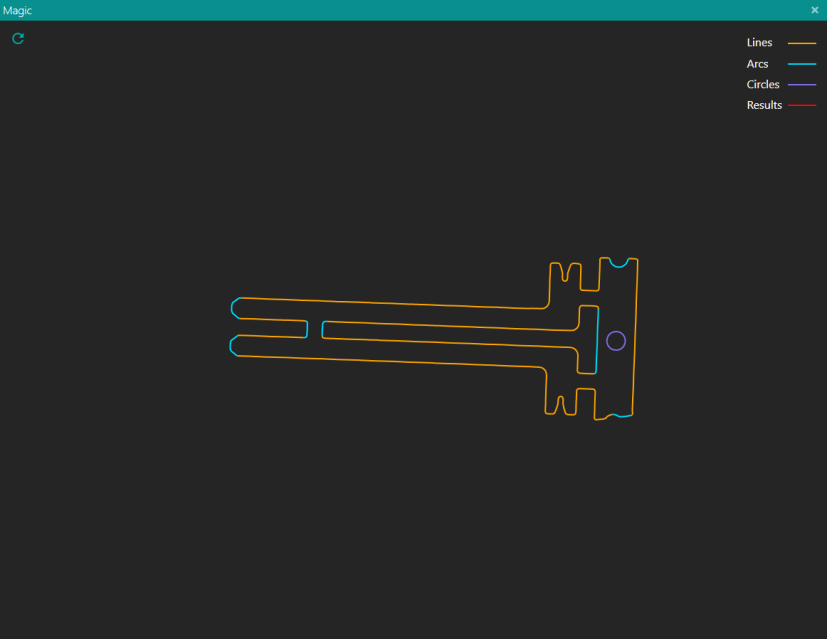Detection
The detection feature has the aim to detect primitives on the object based on the edge and it has a "smart" mode and different manual modes for different primitive shapes to be found.

- Smart
The “smart” mode detects all the primitives and suggest which primitive is possible to create (color scale to the right).
In order to create the primitives click on the them:

Moreover, it is possible to edit the "smart" mode in order to correct errors in the detection and impose the correct shape.
Select the type you want to use and click on the the part to correct the element. The manual commands allow to select arbitrarily the primitives choosing between circle, arc, line or point, as shown in the following examples.

The detection feature does the analysis, it is possible to verify the matching clicking on the Primitive Analyse.
- Circle
click inside the primitive to be recognized |
click outside the primitive and confirm to obtain it |
To discern a primitive with the manual mode, it is necessary to guide the program by clicking inside and outside the supposed circle
- Arc and Line
click on both sides of the line to set one beginning |
click on one side to set the lenght |
click on the other side to set the end of the primitive |
confirm to obtain the line |
click on both sides of the line to set one beginning |
click on both sides to set the end of the primitive |
confirm to obtain the arc |
To detect Arc and Line the points to be clicked are four in order to cut the edges of the shape: the first and the last pair of points create an intersection that define respectively the beginning and the end of the selected primitive.
There is the possibility to draw an arbitrary number of selections, with the aim to avoid parts and connect others.
create a arc or line selection |
create another arc or line selection |
confirm to obtain a primitive that take into account all the primitive selection drawn before |
- Point
1) |
||
Select a rectangle |
Confirm to find the higher, lower, leftmost or rightmost point of the primitive inside the border of the rectangle |
2) |
||
Select a line |
Set one point in order to create the orthogonal to the line passing through the point and find the intersection(s) with the primitive (closest, furthest or any) |
3) |
||
Set one point |
Set another point |
Confirm to find the intersection of the primitive with the line connecting the points (first found or all) |